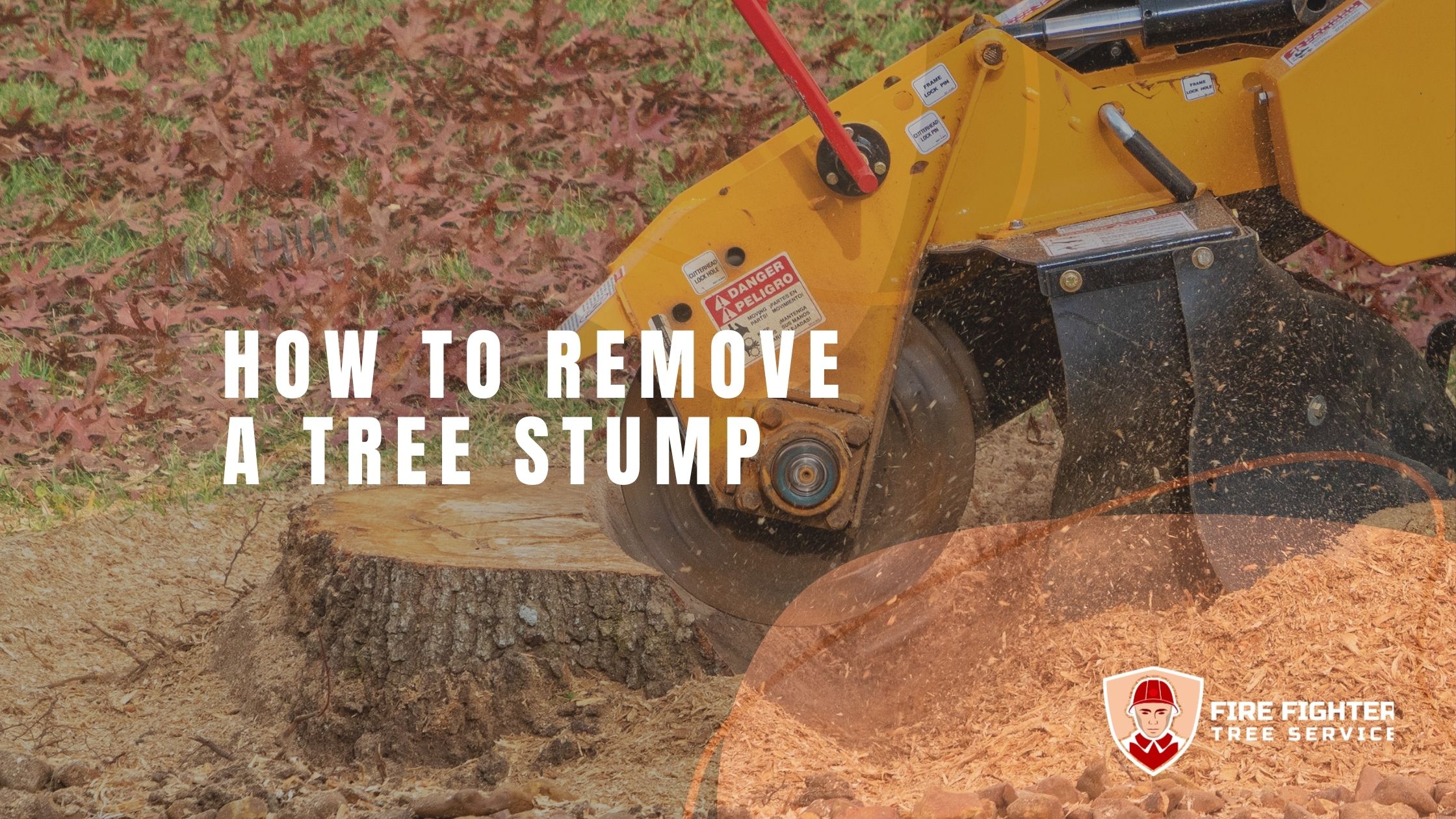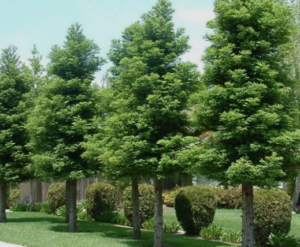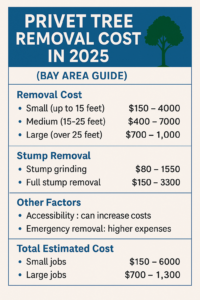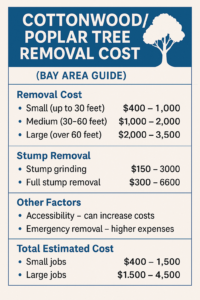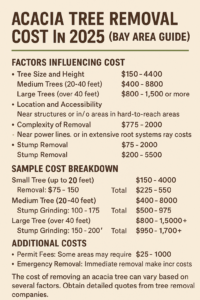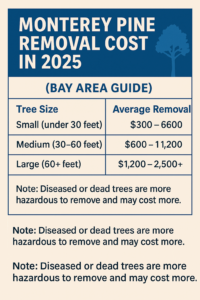Removing a tree stump—sometimes called a “tree stub”—may seem like a minor task after felling a tree, but it’s actually one of the most vital steps to maintain a safe, attractive landscape. Left unchecked, tree stumps can harbor pests, cause new shoots to sprout, or even damage lawn equipment. Below, we’ll explore four effective removal methods, plus a traditional technique, and provide detailed steps to help you get rid of stumps for good.
Why Tree Stump Removal Matters
- Prevents Regrowth: Stumps and root systems can continue to send out fresh shoots, leeching nutrients from surrounding plants.
- Avoids Pests and Diseases: Decaying wood attracts insects and fungi that may spread to healthy plants or even your home.
- Clears Space: A yard free of stumps makes it easier to mow, landscape, or build.
- Boosts Curb Appeal: A stump-free property simply looks cleaner and more appealing.
4 Simple Methods to Remove a Tree Stump

The Chemical Removal Method

1. Chemical Removal Method
Tools & Materials
- Drill (corded or cordless)
- Large drill bit
- Tree stump removal chemical (e.g., high-nitrogen fertilizer or Epsom salt)
- Shovel
- Axe
- Chainsaw (optional, for professionals)
- Mulch or tarp
- Protective gear (safety glasses, ear protection, sturdy footwear, gloves)
Step-by-Step Guide
Step 1: Prepare the Stump and Area
- Choose the Right Season: Warmer, drier months are ideal because the wood is less dense.
- Clear Debris: Remove rocks, sticks, and loose vegetation from around the stump.
- Cut the Stump Lower (If Needed): A chainsaw can help reduce the stump as close to ground level as possible. Only operate a chainsaw if you’re experienced.
Step 2: Drill Deep Holes
- Use a large drill bit to create multiple holes on the stump’s surface and sides.
- Drill them as deep as possible. These holes help the chemical penetrate to accelerate decomposition.
Step 3: Apply Stump Removal Chemical
- Chemical Options:
- Commercial stump remover (often rich in potassium nitrate)
- Epsom salt (eco-friendly, inexpensive)
- Cow manure (another natural alternative)
- Pour the chemical into the drilled holes. Spread any leftover product around the stump’s top and sides for full coverage.
- Check Local Regulations: Some states limit the use of certain chemicals. Always confirm you’re using an approved product.
Step 4: Soak, Cover, and Wait
- Water Thoroughly: Moisture helps the chemical penetrate and break down the wood more effectively.
- Cover the Stump: Use a tarp or plastic sheeting, then top it with mulch or hay to lock in moisture and speed decomposition.
- Waiting Period: Typically four to six weeks. You’ll know it’s working when the stump starts to feel soft, spongy, or crumbly.
Step 5: Remove Remaining Roots
- Burn the Stump (Optional): If it’s legal in your area, some products advise adding kerosene or fuel oil in the holes before lighting.
- Safety First: Keep a hose nearby, remove flammable debris, and monitor the smoldering stump to prevent accidental fires.
- Final Cleanup: Once the wood has fully decayed or burned, chip away leftover roots with an axe and shovel.
2. Tractor or Backhoe Method

Tools & Materials
- Tractor with a backhoe attachment
- Shovel
- Axe
- Protective gear
How It Works
- Expose the Roots: Dig around the stump using a shovel or axe to reveal as many roots as possible.
- Attach the Backhoe: Secure the backhoe to the tractor. Position the arm so that it firmly grips a large root.
- Pull and Cut: Maneuver the tractor slowly, pulling on the root system. Continue cutting through any stubborn roots with an axe or shovel.
- Exercise Caution: Large stumps with deep root systems may require a professional tractor operator. Improper handling can damage the equipment or property.
3. Stump Grinder Method
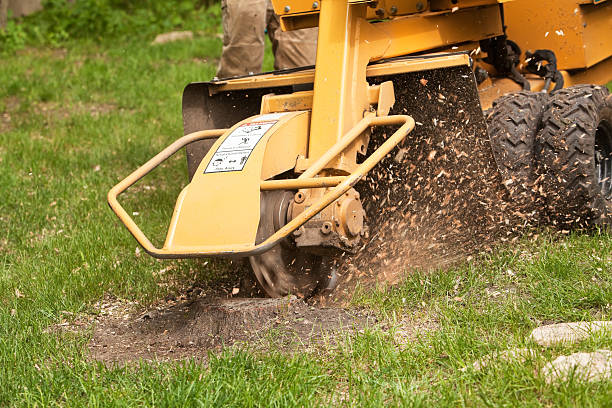
Tools & Materials
- Stump grinder (commercial or residential size)
- Protective gear (glasses, gloves, sturdy footwear, ear protection)
- Shovel
- Axe
Steps
- Clean Up: Use a shovel to remove leftover debris and fill the hole with soil or mulch.
- Select the Right Grinder: For multiple stumps or large diameters, consider a commercial-grade machine.
- Wear Protection: Grinding throws off a significant volume of wood chips and debris.
- Grind the Stump: Operate the machine to gradually chip the stump down below ground level.
- Dispose of Chips: The resulting wood chips can be used as mulch in your garden.
4. Mattock Method (Traditional Manual Technique)

Tools & Materials
- Mattock (similar to a pickaxe)
- Shovel
- Axe (optional)
- Protective gear (gloves, sturdy shoes)
Best For
- Small, Softwood Stumps: Species like desert willow, as opposed to hardwoods like oak or maple.
Steps
- Dig Around the Stump: Remove as much soil as possible to expose the roots.
- Chop the Roots: Swing the mattock to cut through or loosen smaller roots.
- Pull and Pry: After severing roots, pry the stump out of the ground with the mattock head or a shovel.
- Repeat as Needed: For larger stumps, you may need to dig deeper or use an axe for thick roots.
Common Mistakes to Avoid
- Rushing the Process: Chemical decomposition can take weeks. Trying to force the stump out too early may cause more work—or damage your tools.
- Skipping Protective Gear: Tools like chainsaws, stump grinders, and chemicals can be hazardous.
- Using the Wrong Chemical: Unapproved or highly toxic products can damage the environment and harm local wildlife.
- Overlooking Local Regulations: Burning stumps or using certain stump-removal chemicals may be restricted in some areas.
Partner with Certified Arborists for Hassle-Free Removal
Fire Fighter Tree Services is your trusted partner for all things related to trees—whether you need ongoing maintenance, stump grinding, or complete tree removal. Our certified arborists have years of experience operating heavy-duty equipment and applying safe, eco-friendly methods for stump removal.
- Licensed, Local Experts: We understand California’s unique soil and climate conditions.
- Advanced Equipment: From commercial grinders to backhoes, we have the gear to remove any stump size.
- Peace of Mind: No need to worry about regrowth or leftover roots.
Ready to Transform Your Yard?
Contact Fire Fighter Tree Services today to schedule a consultation. Let us handle the hard work so you can enjoy a stump-free, beautiful landscape.
